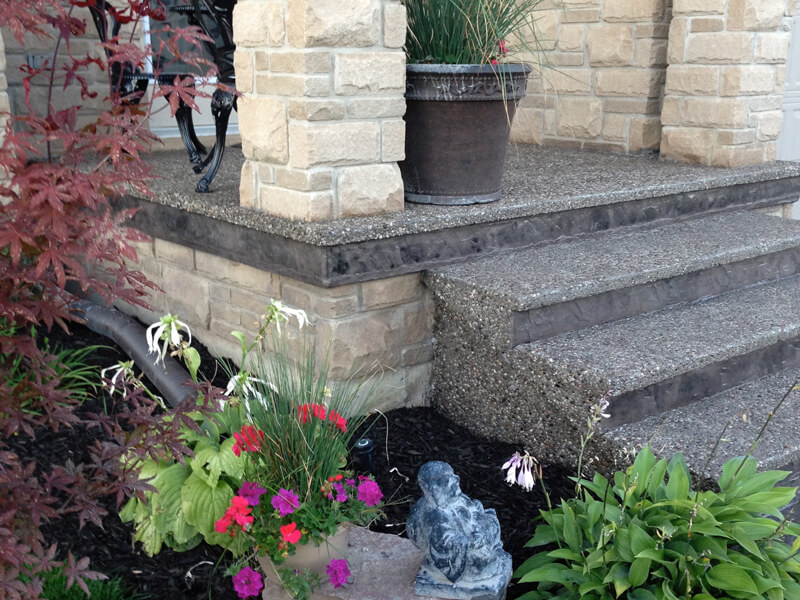We build new porches and reconstruct old deteriorating unsafe porches. There is a wide choice of materials, styles and finishes that will add value to your property.

Step-by-step: porches
Like every customer and their needs are different, every project can be unique with its own demands and challenges that would require customized solutions. However, constructing a concrete porch usually includes the following stages:
Selecting a Design
Our team will set-up a meeting with you to understand your design choices and requirements. We will also suggest suitable concrete type, pattern, colour, finish and shape.
Digging and removal
A combination of manual labour and specialized machinery is used to clear the work area and remove the excavated material from the site.
Formwork
The next process is formwork. As per the selected design, a temporary mould is created into which fresh concrete is poured and set.
Compacting the subgrade
The next step is adding clear gravel. This will provide the proper base for drainage under the concrete. The gravel is then graded and compacted according to the elevation.
Providing reinforcement
Reinforcing steel and/or fibre mesh are imbedded into the freshly poured concrete to add strength and eliminate any concrete separation.
Pouring the concrete
Depending on the project, concrete is poured into the prepared area with the help of wheelbarrow or concrete truck. The fresh concrete is simultaneously leveled and then screeded by drawing a straight-edged tool in a back and forth motion across the surface of the wet concrete.
Finishing the concrete
The finishing process and techniques varies according to the type of desired finish. You can choose:
Regular White Concrete: It is ideal for concrete driveways, patios, walkways, slabs, floors and many other concrete structures. It is the most common and widely used type of concrete and it is the favourite choice. Regular concrete can have a few different finishes, including:
- Broom finish where fine lines are created on the top layer to create a non-slippery surface.
- Hand spin finish is created by hand textured troweling.
- Smooth finish where the top layer is perfectly smoothened using a trowel or similar tool to create a clean, modern-looking surface.
Colour Stamped: A decorative finish commonly used for driveways, patios, sidewalks, pool decks and more. Stamped finish is patterned and/or textured to resemble slate and flagstone. Various colours and patterns can be used.
Exposed Aggregate: To create the exposed aggregate look, the top layer of cement is removed to reveal the small pebbles in the concrete. It is a non-slippery durable finish, available in many colours.
Custom Designed: There are endless possibilities of styles and colours when working with concrete. Whatever style or finish you may choose, it does not compromise the strength and durability of a concrete surface. Contact our team to discuss your style preference and we will work with you to create a custom design for you.
Removing the formwork
The next step is to remove and clear away all the formwork.
Washing
Pressure washing is required before sealing the concrete.
Cleaning and tidying
Once all the major construction steps are complete, our team will properly clear the site of any debris and also wash the required areas.
Sealing the concrete
It is important to use the correct type of sealer based on the concrete finish and its intended use. Concrete sealers help provide protection to the concrete surface. Not every sealer looks or performs the same. There are two general paths to concrete sealers. Penetrating sealers include both repellants and hardeners. Both are products that penetrate into the concrete, thus making the surface less porous. The benefits of penetrating treatments are that these products soak into the concrete. This provides protection to exterior concrete from the freeze and thaw cycles (environmental elements) and from certain chemicals. The other path to protection is topical sealers. Unlike penetrating sealers, they do not penetrate deeply into the capillary pores of concrete. Proper sealing methods are required for successful results.
